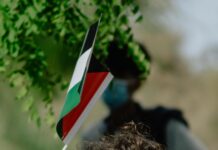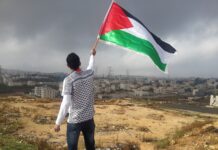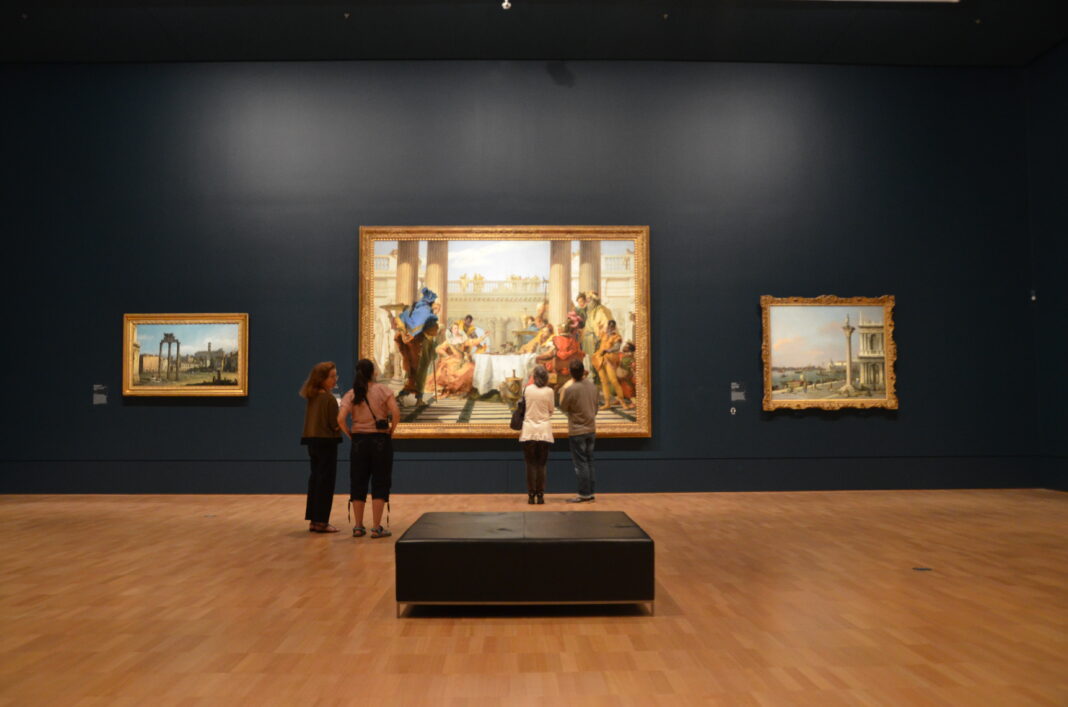Happy New Year! A celebration commemorated at least three times a year if you’re in Malaysia. Aside from the Gregorian New Year, the Chinese New Year and the Islamic (Hijri) New Year are also celebrated and observed as public holidays there. Yes, ladies and gentleman, there is a world outside the Western sphere; different calendars, different cosmology, different worldviews. They exist but are they acknowledged? We’re not sure.
Acknowledgement of different worldviews is one of the many ways if one were to decolonise, especially in museums. Although historically, decolonisation refers to the birth of new nation states after the transfer of political sovereignty from the coloniser (namely the British, French, Dutch, Spanish and Portuguese) to the formerly colonised, decolonisation today comes in many forms with wider definitions and scopes. Now, decolonisation goes beyond political sovereignty with calls to decolonise institutions such as universities, curriculum, and also, museums.
Western Museums
Since the 17th century, the concept of the modern museums in Europe was a cultural invention rooted deeply in Western museology[i]. This type of museology often neglected other cultures’ models of museums and curatorial practices which relied heavily on one knowledge system – the Western system. This system dictated why and how non-Western objects are systematically organized and reconfigured to fit into Western constructs of culture, art, history and heritage. Thus, in this context, the call to decolonise museums is to promote and apply indigenous curatorial methods. However, there has been resistance in applying these methods by some professional museum communities because they believe them to be too closely tied to religious beliefs, which is in conflict with the secular, scientific character of museums[ii].
The hegemony inevitably contributed to the global spread and reproduction of Western-oriented museum models and has made it difficult for many to imagine alternative forms of museological behaviour[iii]. With the prevalent domination of the Western museology, talking about reconfiguring the curation, heritage preservation and reconstruction of museum narratives, as well as the general decolonisation of museums, is nevertheless a monumental task.
Museum Decolonisation
To decolonise a museum is not as straightforward as one might think. Firstly, it must be identified what form of decolonisation it is facing. Each institution would face different challenges as there is not a one-size-fits-all decolonisation framework. For example, the decolonisation of museums in the United States of America, Canada, Australia and New Zealand would deal mainly with the ‘settler colonialism’, where the white-western system is dominant and often eliminates or conveniently side-lines the histories, culture and cosmology of the indigenous peoples.
While museums in the United Kingdom are facing decolonisation from within due to the lack of acknowledgement and the poor representation of their minority communities (mainly the Black, Asian, and minority ethnicities), there are countries in Southeast Asia, such as Malaysia, where the struggle of decolonisation lies not only in museology but in the knowledge production that the former coloniser left behind.
Colonial Knowledge Production
In Malaysia, although the Malays form the majority of the population and the colonial British transferred political power to the British-recognised ‘Malay elites’, the writings on the Malays are from very limited general knowledge on the Malays. With the introduction of the Western school secular system, the British managed to infuse in the school subjects that they are regarded as the saviour of the Malays. The development of imperialism, and reports submitted in the 19th century by colonial explorers in Southeast Asia, have been extensively misrepresented as justification to reinforce the European perceptions about their advancement and the decline of non-European societies.
This colonial knowledge exemplifies the ontological power of the British to codify and reconstitute certain forms of knowledge and practices in the colonies, based on what suits the European eye[iv]; this has become the embodiment of the history of the new nation states, such as Malaysia. This then became a major platform under which representation of postcolonial societies’ histories are articulated. The common characteristics of colonial worldview are usually Eurocentrism, regionalism, secularism, negativism towards Islam, disregard for the local population and culture[v].
Over time, different forms of knowledge seemed to develop out of the experience of the formerly colonised societies, but the exchange of ideas and knowledge between them conducted mainly within the former colonisers’ framework that continued for centuries[vi].
The knowledge production in museums could fall into this category. A 2018 study about the main patterns of geopolitical impact on international museological production, revealed that the authors of the bibliography and citation for the theory of museology, produced over the past 50 years, were from backgrounds created within colonial structures of power[vii]. In addition to the first museums established in Malaysia during the colonial period, the museums in Malaysia established under the ‘international’ museological framework ought to re-examine its practices and framework.
If one were to follow the Western museum framework, most of the objects’ meaning would probably be reduced when described in a White-Western system of classification. To the natives, their weapon could represent one’s status in their own worldview and in their indigenous system. To most Indigenous people, objects are not just scientific specimens or works of art. They are also family heirlooms, symbols of rank and status, sacred material necessary for religious beliefs, and practices or documents of a community’s history and heritage. The wealth and prestige of an object could be an invaluable object to their heritage that shouldn’t have left its place of origin in the first place. Unfortunately, there is a contrast between the Indigenous peoples’ interpretations of the meanings and values of objects and how they are perceived and valued in Western secular system of museums.
Reconstructing the Frame
Museums decontextualize objects from their original conditions and reframe them on their own terms, which are often bound to colonial ideologies. That’s how objects, like the keris, sometimes has its meaning reduced. To the Malays and to the Javanese, the keris is more than just a weapon; it is part of one’s identity, his or her jatidiri. More often than not, in the ‘trained’ Western eyes, it is a just a dagger, a curved blade or simply a weapon – or perhaps an elaboration of the material’s use to try boost its value – no soul to the explanation, whatsoever.
Museums give cultural objects an aesthetic and artistic function; the lived social practices, beliefs, and identities infused in them are changed to foreign peculiarities for Western eyes[viii]. For example, if you were to describe the architecture of your house, it would be on the material use. It will be described as a house; a structure of bricks with roof made of baked clay and so on. But if an indigenous person were to describe their traditional house, they would also explain how the house is a home and add more soul to the narrative, going beyond the Western culture’s material aesthetics. When indigenous objects are reduced to the perspectives of a system that side-lines non-western worldviews, it is as though you are presented with a soup on a plate – the content still exists but the flavours and the essence would be reduced or lost completely.
Therefore, there is no point of successful restitutions and repatriations of objects from the former colonisers, if these objects continue to be represented under the Western secular system. The pivotal part of reconstructing Western narratives of the Indigenous peoples is when the stories and representation of the culture or civilisation are well represented – no longer in the ‘typical’ modern way.
References
[i] Ambrose, T. and Paine, C. (1993) Museum Basics. London: Routledge & Christina Kreps (2006) Non-Western Models of Museums and Curation in Cross Cultural Perspective in A Companion to Museum Studies Edited by Sharon Macdonald. Blackwell Publishing
[ii] Christina Kreps (2008) Chapter 1: Indigenous Curation, Museums and Intangible Cultural Heritage
[iii] Ibid.
[iv] Shamsul, A. B. (2012). When knowledge invents boundaries: From colonial knowledge to multiculturalism. In Nair-Venugopal, S. (Ed.). The gaze of the west and framings of the east. London: Palgrave Macmillan
[v] Tatiana Denisova (2016) The Historiography of the Malay World from the Perspective of De-colonization: Main Issues and Misconceptions. Proceedings of the 9th International Congress of the Asian Philosophical Association (ICAPA)
[vi] Shamsul, A. B. (2012). When knowledge invents boundaries: From colonial knowledge to multiculturalism. In Nair-Venugopal, S. (Ed.). The gaze of the west and framings of the east. London: Palgrave Macmillan
[vii] Bruno Brulon Soares and Anna Leshchenko (2018) A Call for Decolonisation of Museum Theory. ICOFOM Study Series 46, 2018
[viii] Annabelle Grigg, 14 April 2020 – https://cherwell.org/2020/04/14/can-museums-be-decolonised-the-restitution-question/












